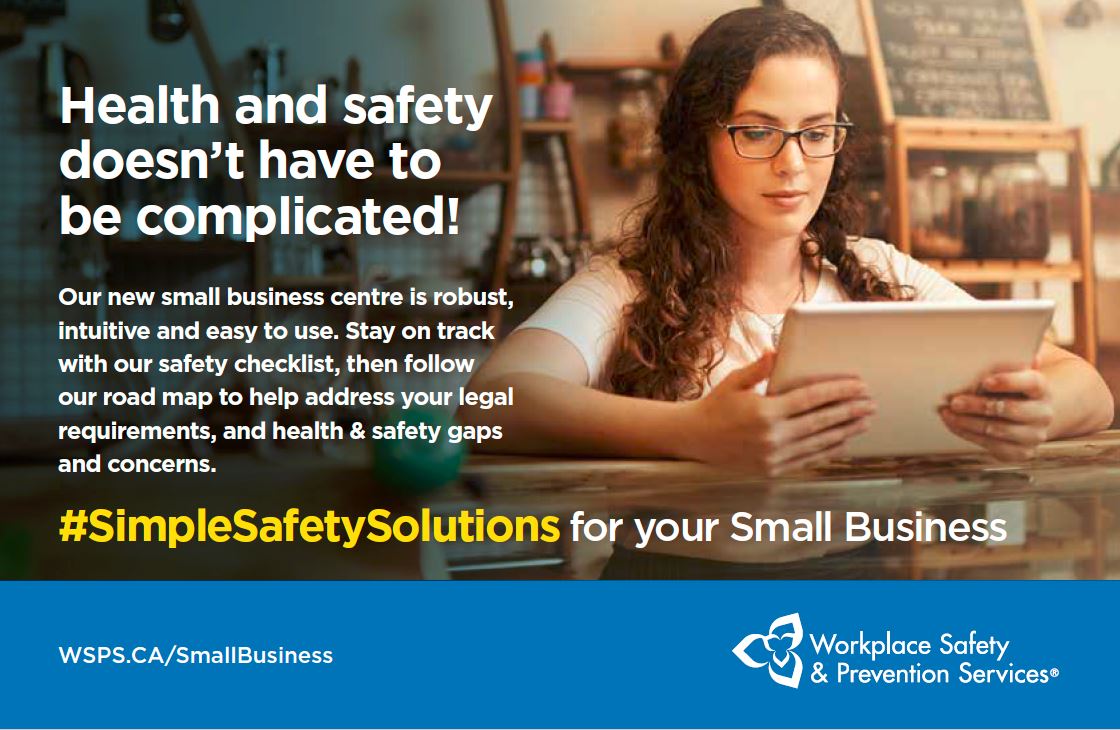Road Safety: Winter Edition
Travelling on snow and ice-laden roads to deliver training and consulting to firms across the province for over 100 years, Workplace Safety & Prevention Services (WSPS) consultants know a thing or two about the perils of winter driving.
"People who drive for work and to work, face the same winter risks," says Sandy Ibbitson, WSPS Health and Safety Consultant and retired driving instructor. Among the hazards: black ice, slippery surfaces, snowstorms, reduced visibility, and the bad habits of other drivers.
“Training is understood and accepted for other workplace hazards, like confined space entry or working at heights” says Sandy. “But many don’t realize how dangerous driving can be.” According to the WSIB, motor vehicle collisions on Ontario roads are one of the leading causes of worker fatalities.
Here are some tips to help you and your employees stay safe behind the wheel.
Develop policies
Driver safety policies and procedures set out rules and expectations around responsible driving and include training, support, monitoring, and reporting.
“If employees drive more than 500 km each year for work, you may consider having them take a defensive driving course,” says Sandy.
To keep all workers safe, implement an inclement weather policy for closing the facility in advance of severe weather. Also, ensure your employees have a safe place to shelter, should they need to. Consider, does this travel have to happen now? Can this meeting be a Zoom call?
Create awareness
As with all workplace hazards, ensure you consistently talk about road safety to keep it top of mind.
Anyone who drives can benefit from information and advice on how to stay safe on the road. When the weather turns, consider including reminders in your Safety Talks or newsletters, or posting information on staff bulletin boards or Intranet.
Vehicle safety tips
Ensure your vehicle is ready to hit the road and you’re equipped with what you need in case of an emergency.
- Regularly check defrosters/heaters, antifreeze levels, brakes and battery.
- Ensure lights and indicators are working.
- Use snow tires. Winter tires use specialized rubber compounds, unique tread designs, and biting edges engineered to maximize traction in freezing temperatures and on snowy and icy surfaces. “Increased traction means you can stop in shorter distances and have greater control when steering,” advises Sandy.
- Invest in winter-specific wiper blades (if available for your make and model) and carry extra windshield washer fluid.
- Check road and weather conditions before you head out. “Ontario 511 shares real time traffic conditions and is a great resource for planning your route,” suggests Sandy.
- Completely clean-off the outside of your car before heading out; chunks of ice and snow can pose a hazard to you and others.
- Keep your gas tank at least half full to prevent moisture in the fuel line.
- Carry winter survival gear including a blanket, first aid kit, food that won't spoil (e.g. granola bars), water, matches, extra clothing and boots, a shovel, flashlight, flares, and booster cables.
- Ensure your cell has a full charge. And consider investing in a portable power bank for added safety and security.
Winter driving tips
- Slow down and adjust your speed for weather and road conditions. If necessary, allow more time to get to where you are going.
- Understand how your car reacts in winter. All-wheel, front-wheel, and rear-wheel drive vehicles handle differently. “Front-wheel drive vehicles are most common,” says Sandy. “These vehicles hold most of their weight at the front, giving the front tires more traction.”
- Keep a safe distance from other cars. “Most of the time we recommend leaving a 2 second following distance; however, in the winter months, 4 or 5 seconds should be your norm.”
- Stay alert and don't get distracted. Avoid talking on cell phones, reading, texting, grooming, eating and drinking. Also, pay close attention to other drivers who appear distracted.
Access free resources
In addition to road safety, there are other seasonal health and safety considerations. Check out the Winter Safety page on WSPS’ Resource HUB for information and resources.
The information in this article is accurate as of its publication date.
Have health and safety questions? Please contact Denise Lam, WSPS Account Manager, Small Business at Denise.Lam@wsps.ca.
About Workplace Safety & Prevention Services (WSPS)
Workplace Safety & Prevention Services (WSPS) is a not-for-profit organization committed to protecting Ontario workers and businesses. A proud partner in Ontario’s occupational health and safety system and a trusted safety advisor since 1917, WSPS has a rich history of making Ontario workplaces safer. WSPS serves the manufacturing, agricultural and service sectors. WSPS offers unparalleled health and safety expertise, consulting, training and resources for businesses of any size. For more information visit WSPS.ca.
Copyright information
This article was prepared by Workplace Safety & Prevention Services (WSPS). At WSPS we are committed to helping businesses understand their risks and legal obligations to stay in compliance and build safer workplaces. If you would like permission to republish or use information in this article, please contact Jessica Bowes, Content Development Lead at jessica.bowes@wsps.ca.






%202023.png)


